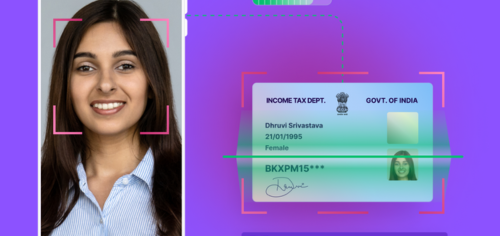.png)
.png)
Live Face Deduction or Live Face Recognition is a technology used for identifying or verifying a person’s identity based on their facial features. It typically involves capturing a live image or video stream of a person's face and matching it to a database of known faces. This technology is used in various industries, including security, banking, retail, and access control, to enhance authentication and reduce fraud.
However, despite its rapid growth and potential, live face deduction comes with a variety of challenges that need to be addressed to ensure it is accurate, efficient, and secure.
.png)
Lighting plays a critical role in the quality of face recognition. Low-light or inconsistent lighting can cause issues in capturing clear images of the face, leading to incorrect deductions or failed recognition.
One of the significant challenges in live face recognition is face spoofing, where attackers use photos, videos, or masks to trick the system into believing the fake identity.
People’s faces change over time due to aging, makeup, facial hair, or medical conditions (like swelling or scarring). These variations can affect the accuracy of face recognition algorithms, especially in systems that don't account for such differences.
Occlusions, such as wearing sunglasses, face masks, hats, or scarves, can block critical facial features like eyes, nose, or mouth, making it difficult for the system to recognize a person.
Live face deduction involves collecting sensitive biometric data, which raises privacy and data protection concerns. Mismanagement of this data can lead to security breaches, identity theft, and misuse of personal information.
False positives (incorrectly matching a person’s face to the wrong identity) and false negatives (failing to recognize the correct person) are common issues in face recognition systems, particularly in non-ideal conditions.
For applications like access control or security systems, real-time face deduction is critical. However, processing high-resolution images or video feeds in real-time can result in latency or delays in recognizing faces.
In applications where large numbers of faces need to be stored (such as airports or large organizations), managing, storing, and retrieving large biometric databases can be challenging in terms of performance and security.
Facial recognition systems have been criticized for exhibiting bias, especially in identifying people with darker skin tones, women, or certain ethnic groups. This bias may lead to unfair treatment, especially in security or law enforcement applications.
Liveness detection algorithms analyze signs of life, such as blinking, head movements, or slight shifts in facial features, to differentiate between a live person and a static image or video.
Combining face recognition with other forms of authentication (e.g., voice recognition, OTPs, or fingerprints) significantly increases security and prevents spoofing.
Deep learning and convolutional neural networks (CNNs) can be employed to improve recognition accuracy, even in challenging scenarios like aging, makeup, or occlusions.
Encrypting biometric data during storage and transmission prevents unauthorized access, ensuring that sensitive face data remains protected and secure.
Edge devices process data locally, reducing the load on central servers and enabling quicker, real-time face recognition.
Multi-spectral and 3D cameras can enhance accuracy by capturing more detailed data about the face, which is particularly useful in low-light conditions or when traditional 2D imaging might fail.
Continuous training and updates of machine learning models ensure they are equipped to handle new challenges, such as evolving facial features or new types of spoofing attacks.
Regular audits and the use of diverse datasets in training AI models help ensure that the system is unbiased and works fairly for all demographics.
Cloud-based facial recognition systems provide a scalable solution for storing and processing biometric data, ensuring that the system can grow to accommodate large datasets without compromising performance.
Live face detection is widely used in public safety applications like airport security, stadium security, or city surveillance to identify criminals, unauthorized individuals, or potential threats in real-time.
Example: Airports using facial recognition for automated boarding pass verification or to monitor suspicious individuals in high-security areas.
Banks and financial institutions use live face detection for secure online banking logins, ATM transactions, and KYC (Know Your Customer) processes.
Example: A customer logging into their banking app using face recognition for secure authentication.
Smartphones and tablets use face recognition for device unlocking, adding a layer of security to personal devices.
Example: Apple's Face ID on iPhones uses live face recognition to unlock the device and authenticate transactions.
Retailers use live face detection to identify loyal customers, personalize offers, or ensure that transactions are authorized.
Example: Automated checkout systems in retail stores where face recognition verifies the identity of customers for payments.
Offices, buildings, and restricted areas use live face detection for contactless entry systems, ensuring that only authorized personnel can access secure locations.
Example: Corporate offices implementing face recognition systems for employee access control.

Live face deduction technology has significant potential for enhancing security, convenience, and user experience across various industries. However, challenges related to lighting, spoofing, privacy, bias, and scalability must be addressed to maximize its effectiveness and reliability. By implementing advanced solutions like liveness detection, multi-factor authentication, and regular system updates, organizations can mitigate these challenges and provide a secure and efficient face recognition system for users.